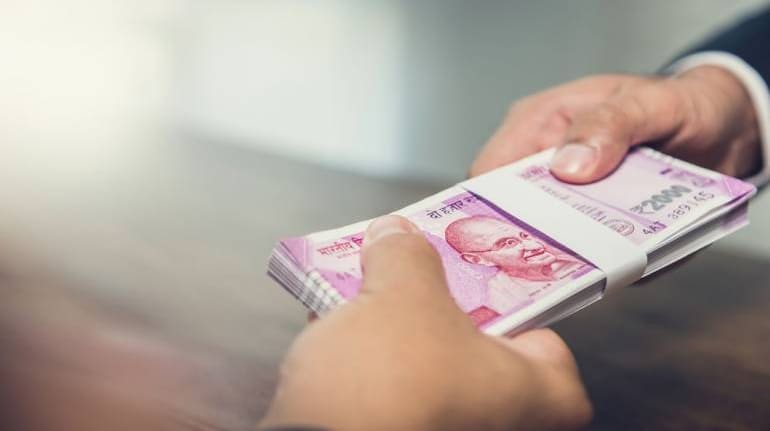



The Reserve Bank of India (RBI) has declared to withdraw Rs 2,000 currency from circulation. It has also asked banks to stop issuing these notes with immediate effect. The RBI has given four months (till September 30) for the public to exchange or deposit Rs 2,000 notes in bank branches or with designated RBI offices.
Post the May 19 announcement, social media was abuzz with speculations about the nature of this move with many comparing it with the 2016 mega demonetisation drive.
It is fundamanetally wrong to compare the withdrawal of Rs 2,000 notes with the 2016 note ban exercise.
There are five reasons for this:
One: Unlike demonetisation, when Rs 500 and Rs 1,000 notes constituting around 86 per cent of the currency in circulation was declared invalid overnight by Prime Minister Narendra Modi, neither the RBI or the government has declared Rs 2,000 notes as invalid this time around. The RBI has clearly said that these bills will remain a legal tender, meaning they can be continued for use of transactions. Hence, the value of the notes remain, whereas the Rs 500, Rs 1,000 notes lost value overnight in 2016.
Two: There is not reason to panic for honest citizens with legit sources for the Rs 2,000 notes. There is enough time and facilities offered by the RBI to deposit or exchange these notes in bank branches or authorised RBI centers. There is time until September 30 for public to do this. Customers can exchange Rs 2,000 notes worth Rs 20,000 at a time starting Tuesday. Also, there is no restriction to deposit Rs 2,000 notes in accounts for customers. The RBI has also permitted business correspondents (agents of banks) to exchange Rs 2,000 notes up to a limit of Rs 4,000 per day for account holders.
Three: Unlike the Rs 500 and Rs 1,000 notes in circulation, the Rs 2,000 notes constitute only a relatively smaller portion of the total currency in circulation at this point. In other words, common people logically will have only small quantities of these notes. Hence, the kind of panic that was visible during note ban is unlikely this time around. To give some perspective, according to RBI data, the total value of Rs 2,000 notes in circulation has declined to 10.8 percent of the total as on March 31, 2023. To be more precise, the total value of these banknotes in circulation has declined from Rs 6.73 lakh crore at its peak on March 31, 2018 (37.3 percent of notes in circulation) to Rs 3.62 lakh crore constituting only 10.8 percent of notes in circulation on March 31, 2023.
Four: The withdrawal of Rs 2,000 notes wasn’t unexpected. The writing was on the wall. The RBI had been bringing down the chunk of Rs 2,000 notes over years since the period of demonetisation. According to RBI data, by volume (number of pieces), from around 274 crore or 2.4 per cent of the total currency in circulation in March, 2020, Rs 2,000 notes have fallen to 214 crore of 1.6 per cent at the end of March, 2022. In value terms as well, the Rs 2,000 notes have fallen from around 37.3 per cent of the total value of currency notes in circulation as on March, 2018 to 10.8 per cent as on March, 2023. In that sense, the direction or approach towards the Rs 2,000 bills was clear over the last few years. Even if RBI didn't announce the withdrawal of Rs 2,000 notes now, these bills would have gone out of circulation over the next few years going by the trend of decline in previous years. Hence, this shouldn’t come as a surprise to anyone.
Five: This is not the first time the RBI has withdrawn notes from circulation. There is a precedent for such an exercise as in 2013-14 the RBI had said it will completely withdraw from circulation all banknotes issued prior to 2005 after March, 2014. The RBI gave time till July 1, 2014, post which customers had to submit proof of identity and residence. The RBI conducts such exercise once in a while as part of the clean note policy. The short point is that the withdrawal of Rs 2,000 notes can be compared only to what happened in 2014, rather than the demonetistaion drill in 2016.
Final takewayTo sum it up, there is no reason for the public to panic assuming a repeat of the 2016 demonetisation exercise as bank branches will begin accepting Rs 2,000 notes for exchange or deposit starting May 23. There are four months from now to get rid of the Rs 2,000 notes in exchange of other denomintaions or by depositing the amount. The RBI has finally drawn the curtains for the pink notes with sufficient precautions and hence the process isn’t likely to end up in chaos.
Discover the latest Business News, Sensex, and Nifty updates. Obtain Personal Finance insights, tax queries, and expert opinions on Moneycontrol or download the Moneycontrol App to stay updated!
Find the best of Al News in one place, specially curated for you every weekend.
Stay on top of the latest tech trends and biggest startup news.